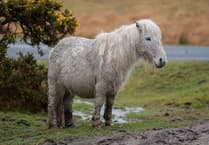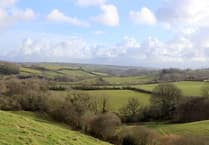Throughout 2022 there were lots of positive developments here in the Tamar Valley Area of Outstanding Natural Beauty (AONB), aimed at improving the resilience of our nature, landscape and communities.
The Tamar Valley is one of the ‘family’ of 46 AONBs across the UK which, along with the National Parks, form our vitally important ‘protected landscapes’.
In 2019, the Government commissioned a full Landscapes Review. This made a series of recommendations as to how Government and all interested parties can further protect and enhance these landscapes and, most importantly, make them more resilient and accessible for people from all backgrounds and communities, for the widest well-being benefits, as well as better places for nature.
The potential benefits of these changes include: Beautiful world class landscapes delivering on the global challenges of the 21st century: Leading the fight against climate change; Feeding the nation while restoring nature; Ensuring clean, plentiful drinking water; Safeguarding against drought and flooding; Growing a sustainable, resilient economy to protect rural communities from economic shocks, and; Delivering health, wellbeing and employment opportunities to all people.
Whilst these changes proceed at national level, the local AONB team continues to work with its partners to deliver positive change in the unique Tamar Valley landscape. Some of the key achievements delivered by our small and committed team in 2022 included:
The three-year Farming in Protected Landscapes (FiPL) programme continues to successfully allocate c.£750,000 of funding for farmers and land managers across the AONB. Over 88 farm visits have resulted in 43 approved projects for improved environmental and farm resilience outcomes, as well as a range of events focused on woodland creation and management, hedge laying, meadow creation, access and social media engagement.
The delivery of the £3.2m Tamara Landscapes Partnership scheme picked up pace with each of its ten projects now under full steam. Working closely with key partners including Tamar Grow Local, Visit Tamar Valley, Duchy College, the National Trust, Plymouth Community Homes, Battling On, the Devon and Cornwall Rail Partnership and many more, projects are broadly focused around themes of community, heritage and land management.
Over 45 community events were held including bio-blitz wildlife surveys for school pupils, yoga, art and craft classes and winter well-being walks. Good progress was made in the assessment surveys and detailed conservation management plans for seven ‘at risk’ heritage sites such as Clitters, Luckett and Gawton Mines and the WWII Landing Stage next to the Tamar Bridge. Funding has provisionally been secured for a trial to restart a passenger ferry service across the Tamar between Calstock, Ferry Farm and Cotehele, including the purchase of an electric boat and reinstatement of the landing stages. This will improve access and connectivity as part of the new Coast to Coast Way linking the south and north coast paths, due to open in summer 2023.
Other projects making good progress included access and interpretation improvements at Wacker Quay on the Lynher Estuary, working with the Tamar Community Trust and providing good volunteering opportunities.
The AONB supported intertidal habitat creation and flood-bank realignment projects at Calstock and South Hooe. Led by the Environment Agency, these are large-scale projects allowing the river to ‘spread out’ over former flood plain areas which had been channelled by the 1950s flood banks. Benefits provided, which will be monitored and shared with the public, include increased biodiversity, water quality, carbon sequestration and public access and connectivity with nature in these beautiful sections of the river valley.
We’ve also been progressing a project as part of the Defra and Environment Agency ‘Natural Environment Investment Readiness Fund’. Our project is looking at the value of our intertidal habitats along the tidal rivers and how we can attract private sector interest and investment in the nature-based services they provide. We now know that the total value of natural capital in the Tamar Valley AONB is over £39 million each year. This includes, for example, the value of climate regulation (natural carbon capture and storage), air pollution removal and natural flood regulation. Local businesses are showing a good deal of interest in how they can get involved.
As you can see, there’s lots going for all on across our special and protected landscape. There’s also lots of opportunities for volunteers to get involved. So if you’d like to find out more, please come and talk to us at the Tamar Valley AONB





Comments
This article has no comments yet. Be the first to leave a comment.